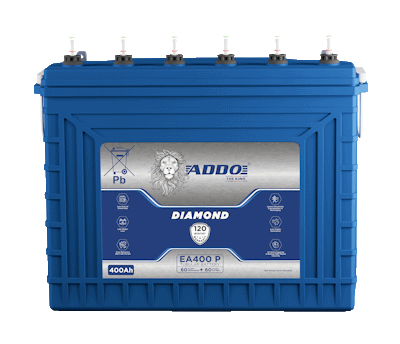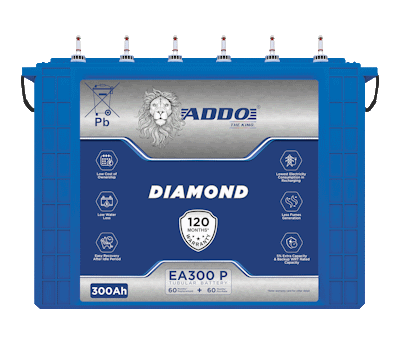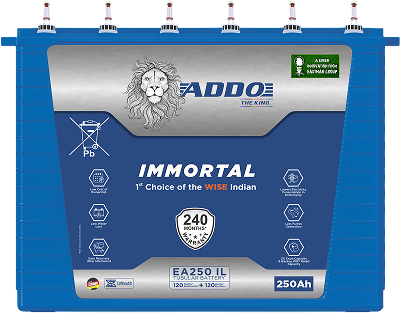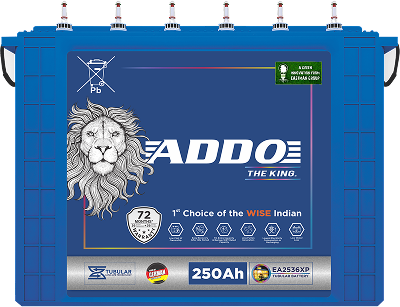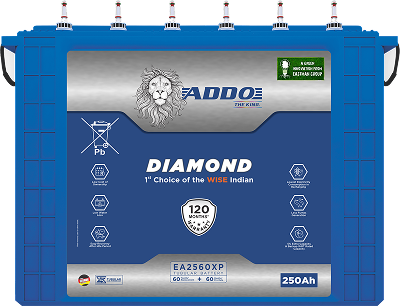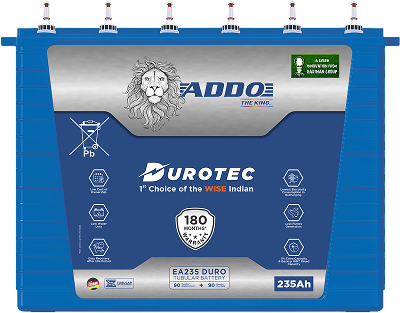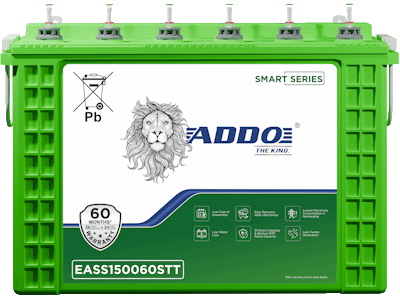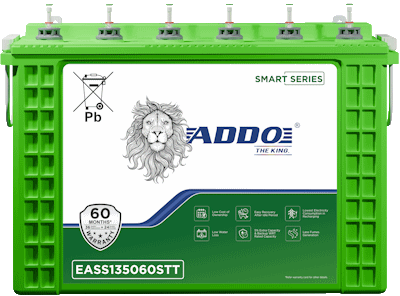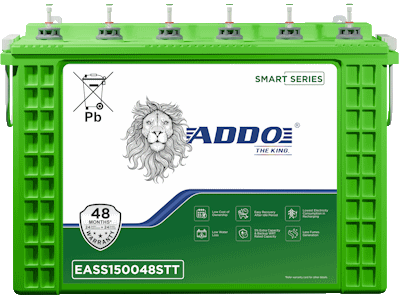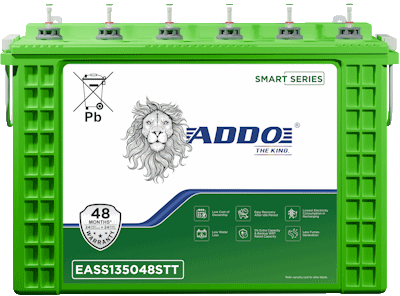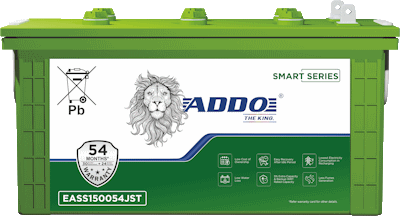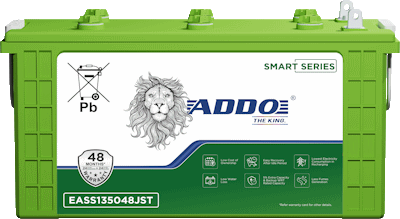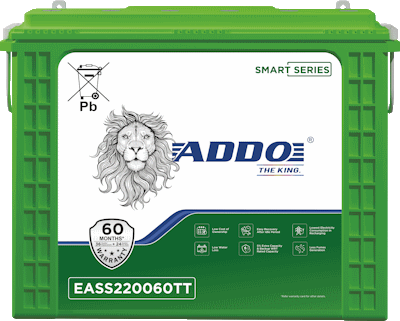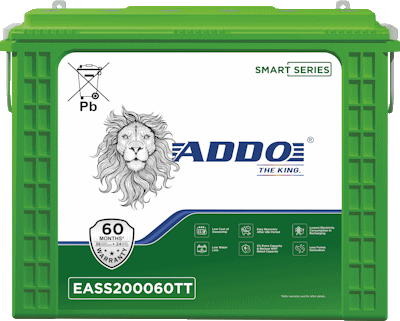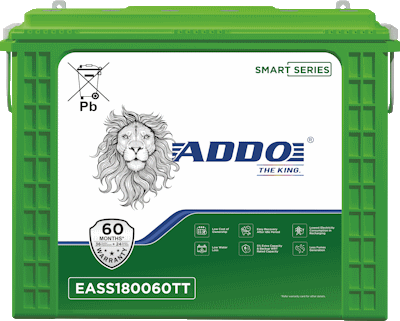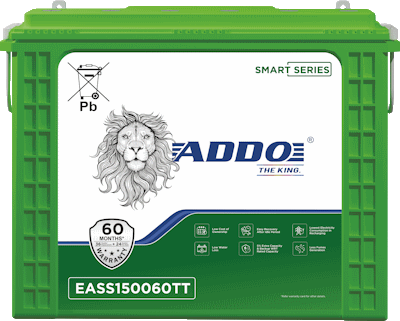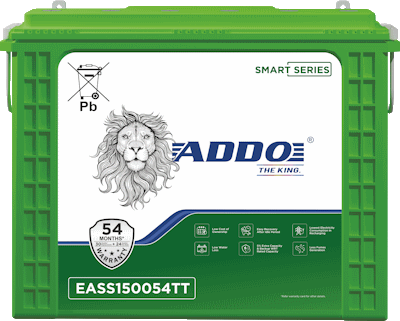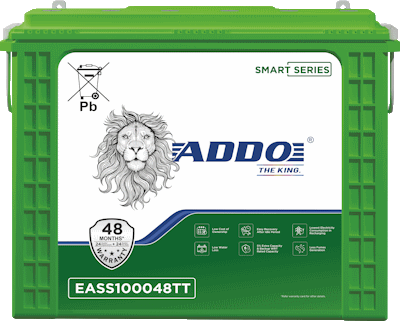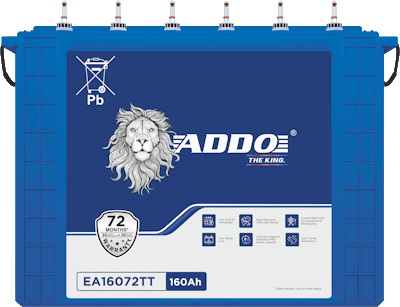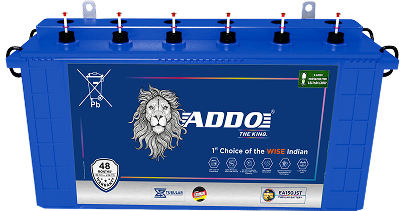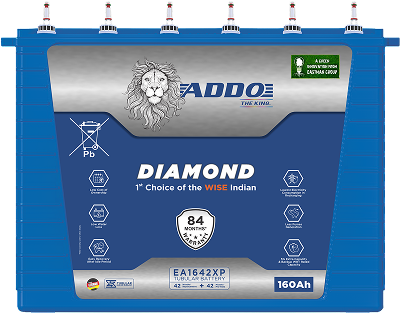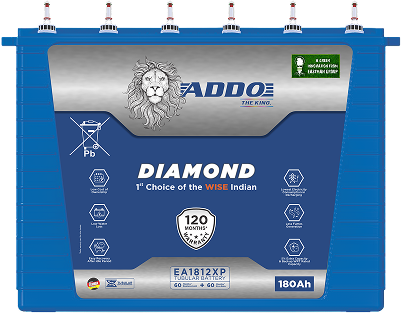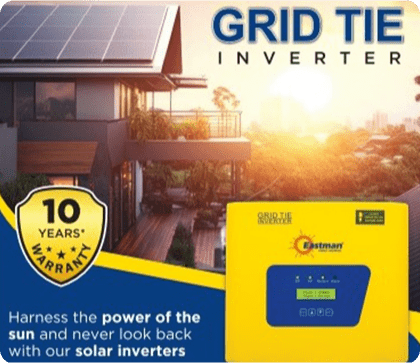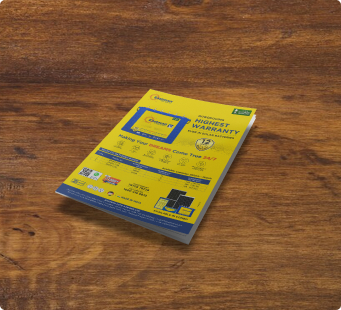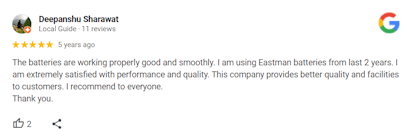Our Product Range
Our Features
Lowest Electricity Consumption in Recharging
Save a whopping 1.5 units compared to competitors with same Ah capacity, resulting in significantly reduced energy bills.
Easy Recovery after Idle Period
Even after 3-month idle period, get full backup power in the first cycle.
Less Fumes
With Ceramic vent plugs and aqua trap technology, eco-friendly Inverter Batteries utilize new-age technology for low electricity consumption and minimum acidic fumes.
Low Water Loss
Save time and money with fewer water top-ups—designed for hassle-free, low-maintenance performance.
Low Cost of Ownership
Designed for long-term savings, our battery offers over ₹9,000 in electricity cost reductions across 5 years (30 units/month saved), and an additional ₹1,500 through minimized water top-ups. Plus, benefit from a 40% payback at end-of-life through recycling—maximizing ROI while minimizing lifecycle costs.
5% Extra Capacity and Backup
5% additional backup across all battery ratings, compared to industry peers. Our batteries last longer during power outages, and while using them heavily.

FAQ
There are three main types of inverter batteries: tubular, flat plate, and lithium-ion. Each offers distinct advantages. Choose based on your specific power needs and preferences.
When deciding between a 150Ah and 200Ah inverter battery, it's crucial to consider your power usage, duration of backup needed, available space, and budget. While a 200Ah battery offers longer backup times and can handle higher power demands, a 150Ah battery may suffice for smaller setups with lower power requirements. Assess these factors carefully to make an informed decision and ensure uninterrupted power supply. Let's calculate the optimal backup time of the battery.
Backup Time of Inverter Battery = (Battery Voltage x Battery AH Rating) / Total Watts on Load
For example:
Battery voltage: 12V, Battery AH rating: 150Ah, Load requirement: 800 watts. Backup time of battery: (12 * 150) / 800 = 2.25 hours
Battery voltage: 12V, Battery AH rating: 200Ah, Load requirement: 800 watts. Backup time of battery: (12 * 200) / 800 = 3 hours.
When buying an inverter battery, consider factors like battery type, capacity, warranty, and maintenance requirements. Ensure compatibility with your inverter for optimal performance.
Maintain inverter battery health by regular charging, avoiding deep discharges, checking water level & replinishing it and ensuring proper ventilation. Follow manufacturer guidelines for extended lifespan.
It's not advisable to connect batteries of different capacities, it can potentially damage the batteries. Use batteries with the same capacity and specifications for optimal performance and longevity.
Adding 2 batteries to an inverter is possible, but they should have the same capacity and type. Moreover, your inverter should be able to support two batteries and for this you need an inverter with atleas 24V rating. Follow manufacturer recommendations for a safe and efficient setup.
Running a fridge or any electrical device is primarily done by the inverter. A battery is source of power to the inverter. The battery capacity defines the duration of the backup based on the load begin run by the inverter. Ensure the inverter capacity meets both appliances' requirements for optimal performance.




